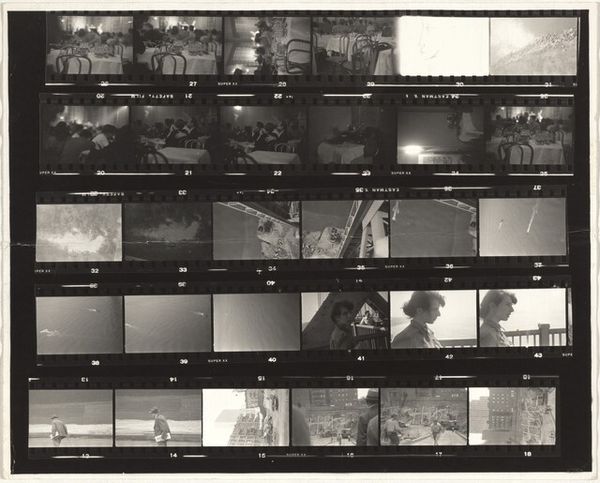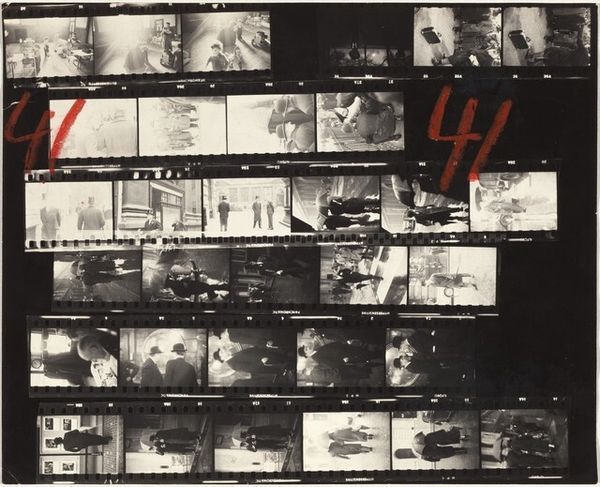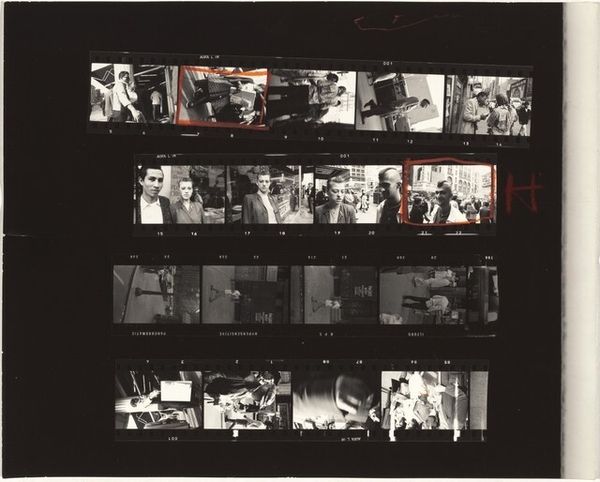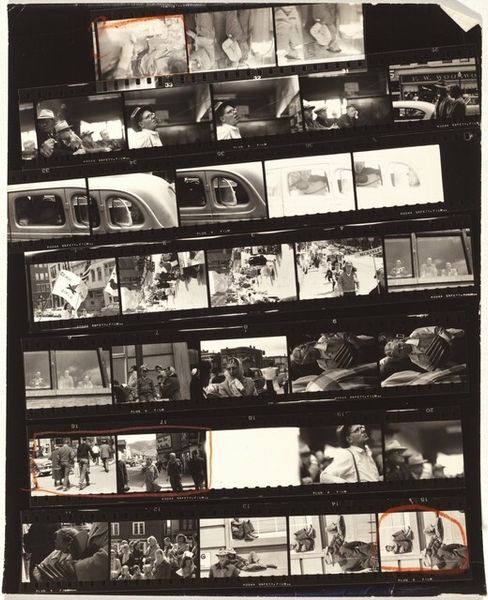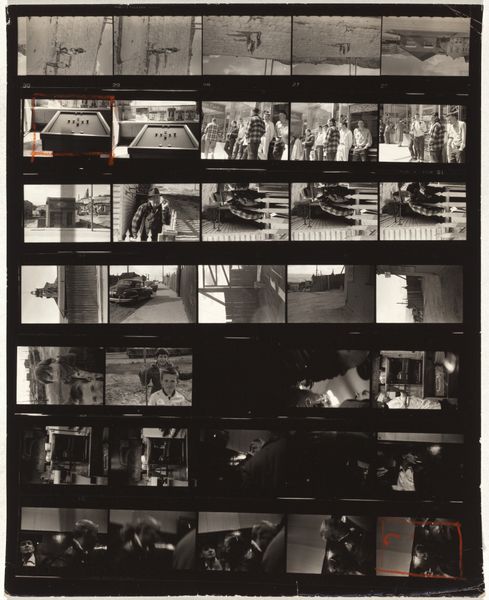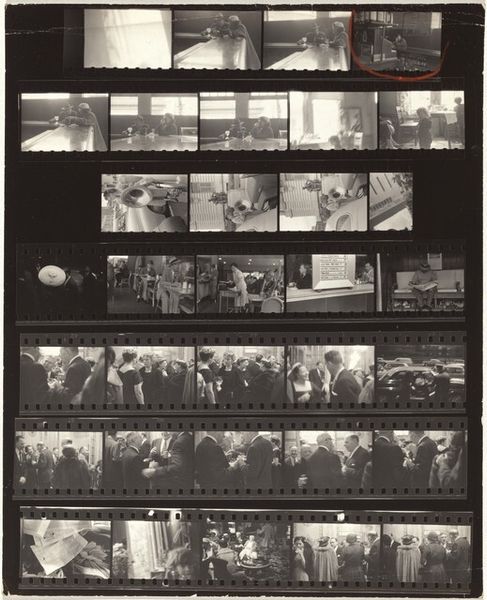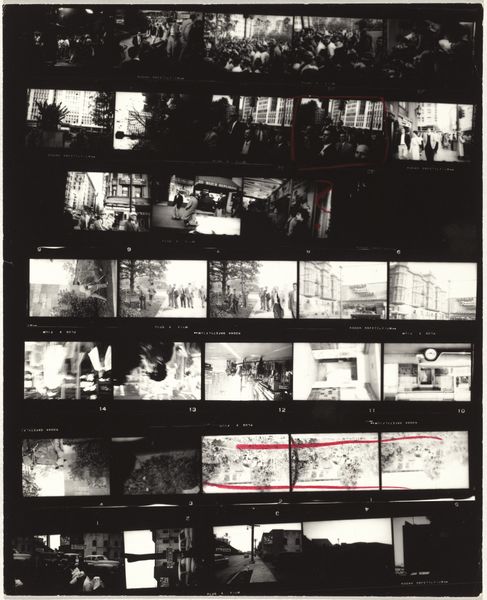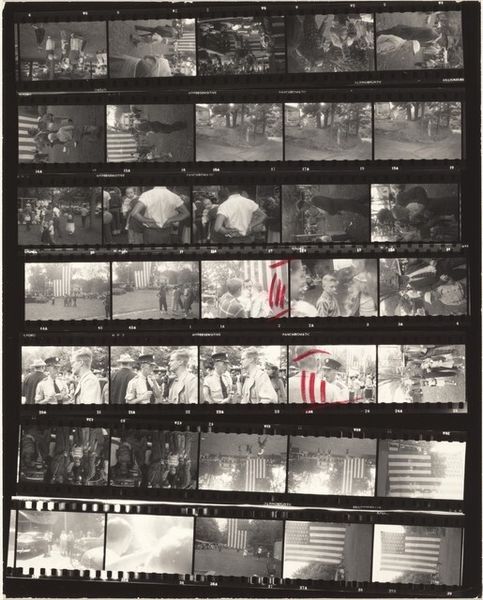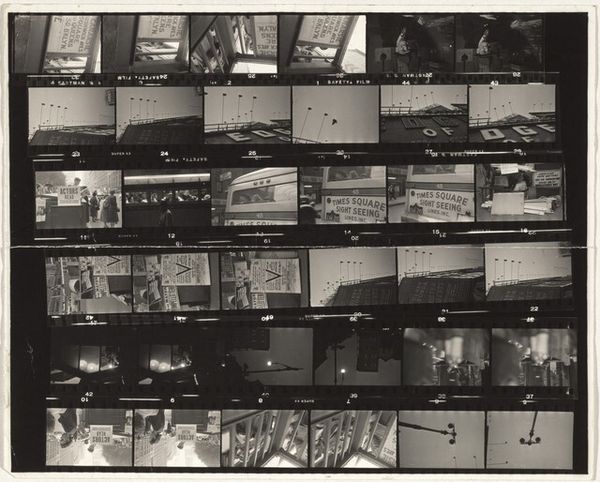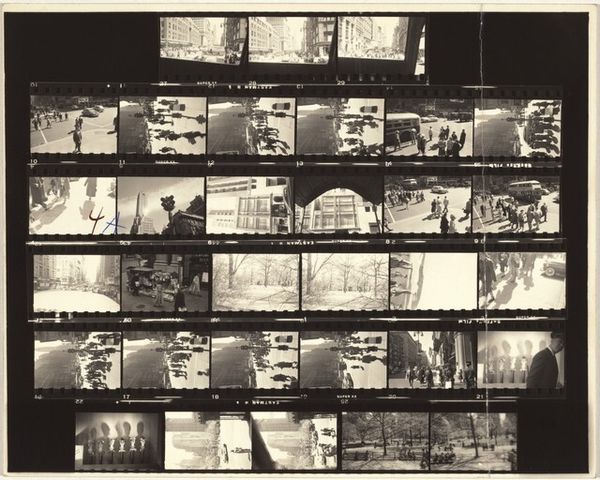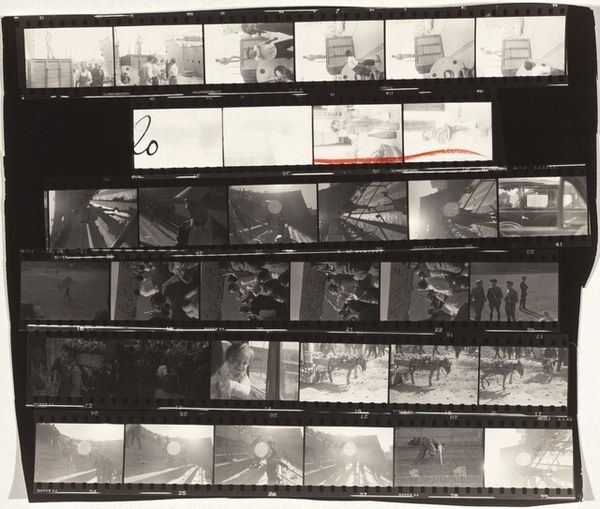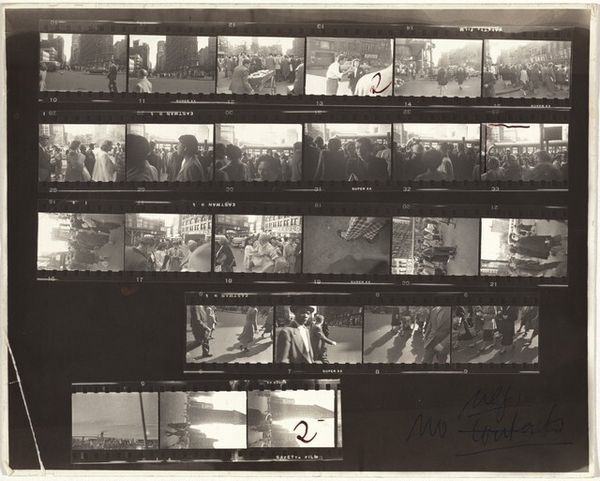
Dimensions: overall: 20.2 x 25.6 cm (7 15/16 x 10 1/16 in.)
Copyright: National Gallery of Art: CC0 1.0
Curator: This is "London 45" by Robert Frank, made between 1952 and 1953. What strikes you first about this gelatin-silver print, Editor? Editor: A grid! I mean, this isn't just a photo, it's a photo of a filmstrip. There's something about the little faces peeking out at the top that just tugs at me—melancholy maybe. Or a stark city life distilled into twenty little moments... Curator: The presentation as a contact sheet is key. It foregrounds the photographic process, right? Frank wasn't just interested in the decisive moment, but in the accumulation and selection of images, the labor involved in creating a narrative about London. Editor: It almost feels voyeuristic. Like we are not supposed to see it... like this. I feel the same viewing street photography in general though. Do we have a right to make our emotions off other's street sorrow? Curator: Right, that’s Frank’s modernism, inviting the viewer to question the consumption of the photograph as an object. You notice the urban scenes – cityscapes and candid street portraits– and they present a social record, especially significant given the post-war context in London. What narratives do you read, Editor? Editor: Narratives are hard... they feel unfinished, a bit like life I suppose. There is an element of poverty though that strikes me, a certain weight to everything. Even the light looks heavy and gray. Curator: The roughness of the gelatin-silver print serves to show the conditions he was interested in depicting and exposing. Editor: I read more into the presentation I guess than into the singular images. The cumulative impact amplifies the sense of alienation. The materiality isn't an advantage of communicating it. It's in seeing a bunch of lonely, bleak city photographs at the same time, which really cements this emotion into me. Curator: Absolutely. It challenges the notions of photography being slick or objective. By revealing the means of production – the raw film, the edge markings – he makes us think about the role of photography in shaping our perception of reality and labor in the frame. Editor: He absolutely made it an experience for me. Instead of getting one pristine, carefully composed shot, we get a contact sheet... A slice of the everyday... Messy. A genuine human experience! Curator: Precisely, and it also reminds us of the layers involved in photographic work, so to speak.
Comments
No comments
Be the first to comment and join the conversation on the ultimate creative platform.
